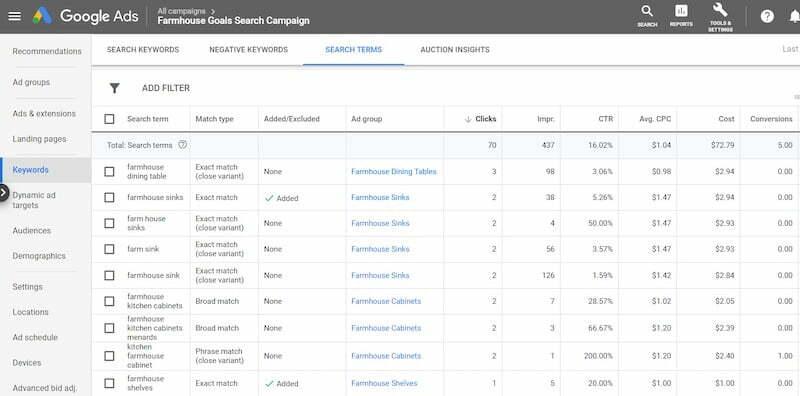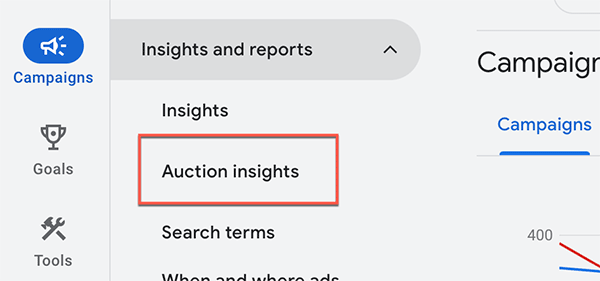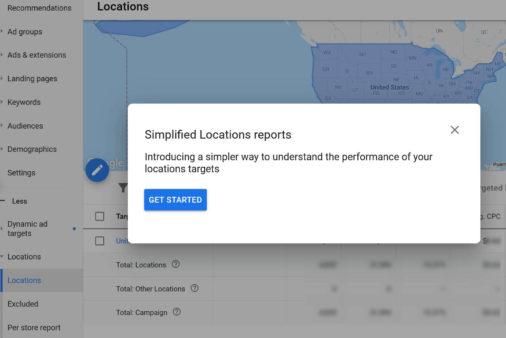To ensure your Google Ads campaign succeeds, focus on Search Terms Auction Insights and User Location. These core metrics offer critical visibility into how your ads are performing, where your budget is going, and what your audience is actually searching. When combined with the support of a Google AdWords certified company, these insights can dramatically boost your ROI and help you stay ahead of competitors in dynamic markets like Dubai.
Table of Contents
In this blog, we’ll break down how search terms, auction insights, and user location influence your Google Ads performance, what secondary metrics to monitor, and how to apply actionable strategies to your campaigns.
The Role of Search Terms in Google Ads Campaigns

What Are Search Terms?
When someone uses a certain phrase or keyword to search on Google, it triggers your ad to appear. Though you base your campaign on keywords, search terms indicate the actual terms real users are typing into search engines. Monitoring search terms allows you to understand your target groups’ interactions with your ads.
Why Are Search Terms Important?
- Discovering Negative Keywords: Considering search terms allows you to find and add unnecessary ones that are blocking your ads. This prevents wasteful ad spend.
- Uncovering High-Performing Keywords: You often find keywords with potentially high performance in search term reports that you hadn’t planned for in your earlier strategy.
- Improving Ad Relevance: When your ads are related to the search terms, they usually do well, allowing your quality score to increase and the cost-per-click (CPC) to fall.
Actionable Tip: Enhance Campaign Efficiency
Review your search terms report weekly to refine your keyword list and ensure you’re targeting the right audience. For example, if irrelevant searches like “free” or “cheap” appear in your report, exclude them to optimize your budget for high-value clicks.
Auction Insights: Unlocking Competitive Intelligence

What Are Auction Insights?
In Auction insights, professionals will find metrics like impression share, overlap rate, position above rate, top of page rate and outranking share. Together, these metrics reveal who your competitors are, how often they outrank you, and where you stand in the competitive landscape.
Interpreting Key Auction Insight Metrics
1. Impression Share
It reveals the proportion of impressions your ads have gotten compared to the impressions you could have received. A high impression share indicates strong visibility, while a low impression share suggests room for improvement in bids or ad relevance.
2. Overlap Rate
It helps you find out how frequently your ad is placed next to your competitor’s ad. A high overlap rate signals direct competition, making it necessary to reassess your bidding strategy or focus on unique selling points (USPs).
3. Position Above Rate
It demonstrates how often your ads don’t rank higher than your competitor’s in the search results. If the CTR is at a high level, it could mean the company is engaging in stronger bidding or has better ads.
4. Top of Page Rate / Absolute Top of Page Rate
They uncover the frequency of your ads being displayed at the very top of SERPs. Optimizing for these positions can improve visibility and user engagement.
5. Outranking Share
It calculates the percentage of the times your ad beats your competitor’s ad when they both compete. When an ad receives a low outranking share, it may be necessary to optimize the ad or raise your bids.
Actionable Tip: Gain a Competitive Advantage
Rely on the auction insights to find your strongest competitors and adapt your approach. If a competitor consistently outperforms you in a specific metric, consider refining your ad copy, increasing bids, or focusing on less competitive keywords to gain an edge.
The Impact of User Location on Ad Performance

Why User Location Matters
Through user location targeting, you can connect with people in targeted locations. This is critical because user behavior, purchasing habits, and search intent often vary by location. By understanding how different regions perform, you can better allocate your budget and craft localized ad strategies.
How to Leverage Location Data
1. Create Location-Specific Campaigns
Segmenting campaigns by user location ensures that your messaging aligns with the local audience’s needs. For example, some businesses in Dubai offering home services may only serve customers living within a set area around the city.
2. Adjust Bids by Location
Increase the bids in the areas where your conversions are higher. In the case that persons based in Dubai are more likely to become your customers, raise your bids in that area.
3. Analyze Geo-Performance Metrics
Monitor metrics such as CTR and conversion rate by location to identify top-performing regions and optimize your campaigns accordingly.
Actionable Tip: Personalize Ad Content
Add terms that are related to the area to make your ads more meaningful to the audience. As an example, “Top Home Services” can be improved to “Expert Home Services in Dubai.”
Combining Search Terms, Auction Insights, and User Location
Building a Holistic Strategy
When you integrate data from search terms, auction insights, and user location, you unlock the full potential of your Google Ads campaigns. This is how these elements are linked and integrated:
- Search Terms + Auction Insights: Use search terms to identify keywords with high intent and cross-check them with auction insights to see how you perform against competitors targeting similar keywords.
- Auction Insights + User Location: If your competitor is usually above you in a specific area, try optimizing your bids and ad content for that place.
- Search Terms + User Location: Analyze search terms by location to uncover regional trends and tailor your messaging to resonate with local audiences.
Example: Improving Campaign Performance
Consider designing a campaign for a mobile app aimed at users in Iran and the UAE. Search terms reveal that people in the UAE prioritize quick delivery, while Iranian users care more about saving money. By combining this data with auction insights, you discover that a competitor is outranking you in the UAE. To respond, you increase bids for UAE audiences and update your ad copy to emphasize “fast delivery.” If you’re scaling campaigns rapidly, it may be strategic to rent Google Ads account access to test performance in high-competition regions like the UAE.
Best Practices for Optimizing Google Ads Campaigns
1. Routine Data Analysis
Regularly review your search terms report, auction insights, and geo-performance data to stay ahead of trends and adjust your strategy as needed.
2. Focus on Actionable Metrics
Focus on metrics that affect performance such as impression share, CTR and conversion rate. Don’t let data that doesn’t provide useful information overpower you.
3. Test and Learn
Explore using various text, bid amounts and targeting methods until you figure out which get you the most clicks. You could see which message works better by testing it in various places using A/B testing.
4. Leverage Automation
Maximize your campaigns by allowing Google to use smart bidding and automated targeting.
Elevate Your Google Ads Strategy
Incorporating search terms, auction insights, and user location into your Google Ads strategy can significantly enhance your campaign’s effectiveness. These tools offer a clear picture of user behavior, competition, and geographic trends—empowering smarter, data-driven decisions. When paired with expert AdWords management Dubai, this approach leads to greater ad relevance, improved ROI, and a lasting competitive edge in any market.
Are you looking to improve your approach to running Google Ads? Our team at Admoon designs high-performing campaigns that match your company’s targets. Call us now to discuss your needs and we’ll help you take over your industry with Google Ads.



